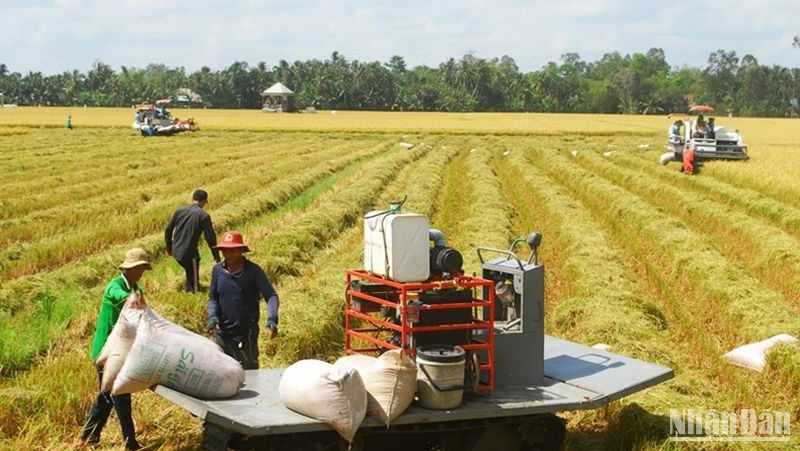The average export price of Vietnamese rice in the first four months of the year was also high, hitting 526 USD per tonne, up 7.6% over the same period last year. The positive growth of rice exports has pushed up rice prices in the Mekong Delta provinces in recent months.
It is forecast that Vietnam’s rice exports will have many opportunities to continue to grow in the coming time. The reason is that the supply of other rice exporting countries is decreasing due to weather and natural disasters, while the demand for imported rice reserves from many countries, has soared significantly.
Specifically, Indonesia is expected to import two million tonnes of rice in 2023. In 2023, China is also expected to remain a major rice import market, with about 5.1 million tonnes.
On the other hand, the demand for rice has increased considerably because rice is becoming an alternative in the context of the high prices of some other grains, due to the Russia-Ukraine conflict.
Vietnam has huge opportunities for rice export with relatively high prices. However, in the context that the global food system is anticipated to be volatile and prone to shortage crises, we need to make flexible adjustments to export activities.
It is necessary to accurately and carefully balance the domestic supply in each crop to increase export volume and turnover, helping enhance profits for farmers and businesses, and at the same time maintaining national food security.
In addition, it is advisable to monitor and make timely forecasts on the world rice market to adjust the selling price appropriately, as well as to redirect the market. Besides, with the high output and selling price of rice, many rice processing and exporting enterprises are running effective businesses and earning relatively high profits, so it is time to focus on investing in rice production in key rice regions.
Accordingly, enterprises should actively participate in the Sustainable Development Project of cultivating one million hectares of high-quality rice, associated with green growth in the Mekong Delta region. In which, investment should be focused on promoting low-emission rice cultivation, making an important contribution to Vietnam’s commitment to reducing greenhouse gas emissions in general and the agricultural sector in particular.
Along with the growing demand for food, the trend of consuming rice originating from low-emission growing areas is increasingly attracting the attention of world consumers and they are willing to pay a fair price.
Localities also need to strengthen the management of rice land to ensure a stable rice land area as stipulated in Resolution No. 81/2023/QH15, of the National Assembly on the National Master Plan in the 2021-2030 period, with a vision to 2050. The Resolution stated that: “Within the appropriate area, it is allowed to flexibly change the structure of crops and livestock on rice land, without changing the nature and conditions of land for rice cultivation, so that it can be converted back to rice cultivation when necessary. It is advisable to strictly control the conversion of rice land, especially land specialising in wet rice cultivation to non-agricultural land, aligned with ensuring the interests of rice growers and rice growing localities.”
















